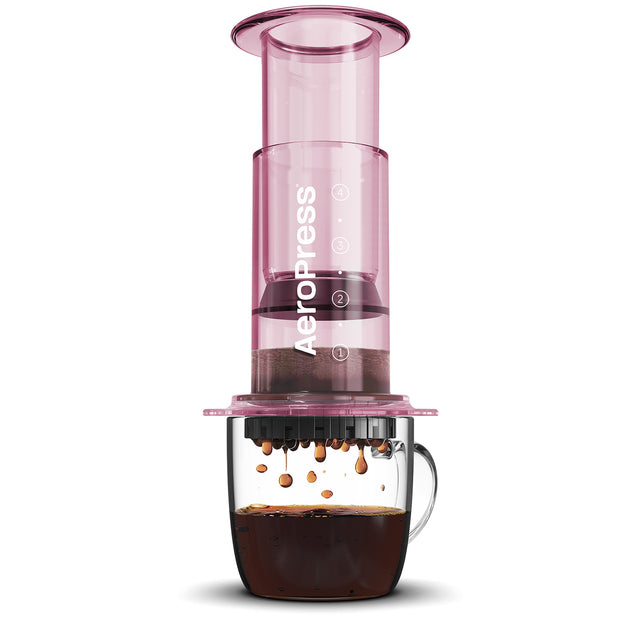What Does ‘Acidity’ in Coffee Mean?
When people talk about coffee, a word that may be used is ‘acidic’. Typically, this won’t be in reference to the actual pH value of the coffee, but rather the flavour compounds present which gives the brew an acidic taste. We take a look at what causes acidity in coffee.

Image Credit: Heinrich-Böll-Stiftung under CC BY-SA 2.0
Flavour vs pH
While coffee is a bit acidic, with a pH level of around 5, it is not exactly this that causes the bolder acidic notes associated with some coffee. We know this because things like fruit juice, beer, wine and cola all have far higher pH levels than coffee, yet typically do not present quite such strong acidic notes in its flavour.
Acidity as Flavour
Instead, when acidity is referred to in the context of coffee, it will be in reference to specific flavour compounds. This includes the likes of citric acid or tartaric acid, which may be present in the coffee beans. These notes can taste wonderful and are more commonly found in light-roasted single-origin coffees.

Which Coffees Are More Acidic?
A lot of flavour is developed in coffee during the roasting process. When the green coffee beans are roasted, they go through a chemical reaction that impacts on the levels of acid within them.
As the beans are heated the concentration of acid will change, typically reducing as the heat is increased, as many acids degrade at higher temperatures. As such, light roasted coffee will generally be more acidic than dark roasts, although there are exceptions to this rule.
Which Acids Are Found in Coffee?
There are a number of different types of acid that are commonly found within coffee beans. Some acids won’t survive the roasting process; however, the ones listed below can take the heat and will work to present flavour within a brew.
- Citric acid
- Phosphoric acid
- Chlorogenic acid
- Tartaric acid
- Acetic acid
- Malic acid
- Quinic acid
Which Acids Taste Good and Which Taste Bad?
Most acidic flavour within coffee should be good, but sometimes it can taste very bad. This may be to do with the specific acids present in the coffee bean or could be to do with the way you make your coffee.
Citric Acid
Citric acid generally offers a great taste in coffee and is found in Arabica beans. This is the same acid that is in citrus fruits, like lemons and oranges.
Phosphoric Acid
Phosphoric acid is a little sweeter than other types of acid, helping to remove sourer notes.
Chlorogenic Acids
These acids are the most responsible for the perceived acidity in coffee, and will usually be found in lighter roasted brews, as it degrades quickly during the roasting process.
Tartaric Acid
Tartaric acid can provide mixed results. If there is too much present in your coffee, it can taste sour. But if you get it just right, then you’ll be treated to a brew with a slightly grapey hint.
Acetic Acid
Acetic acid can also be a bit hit-or-miss when it comes to coffee. Acetic acid is the acid found in vinegar, so too much of this will taste unpleasant in your morning cuppa.
At lower levels, acetic acid can add a nice sharpness to each sip. If it has too much acetic acid, it is likely that the coffee beans were incorrectly processed.
Malic Acid
Malic acid can create fruity notes, including apple, peach, pear and plum. It is usually enjoyable in coffee.
Quinic Acid
Quinic acid develops in coffee as other acids degrade and disappear. It is more commonly found in dark roasted coffee, after other acids have been heated away. It also develops in stale coffee or coffee that was brewed and left in a warm place.

Does Acidity Cause Stomach Problems?
Some people experience stomach problems after drinking coffee, and acidity is sometimes blamed, however, this is not the cause. It is unlikely that the coffee’s acidity is causing you trouble, especially if you can normally stomach the likes of juice or cola.
Instead, stomach problems after drinking coffee could be due:
-
The amount of caffeine in the coffee
Caffeine causes an increased production of gastric juice.
-
Any added milk
Dairy can also promote the production of gastric juice in the stomach.
-
Leftover Bean Solids
The more bean remnants that get in your coffee cup, the more likely you are to have stomach trouble. Use a paper filter to reduce the amount of bean solids that make their way into your cup.
While some people love acidic tasting coffee, others hate it and think it ruins their drink. Check out our guide to increasing and reducing levels of acidity in coffee so that you can make your drink just right for you!
Here at AeroPress UK, we are naturally big fans of coffee and love sharing our insights into the world of coffee with other brew-loving individuals! Follow us on Facebook and Instagram for all the latest news from us, as well as great shots and facts about our favourite beverage!


1 Comment
Muchas gracias. ?Como puedo iniciar sesion?